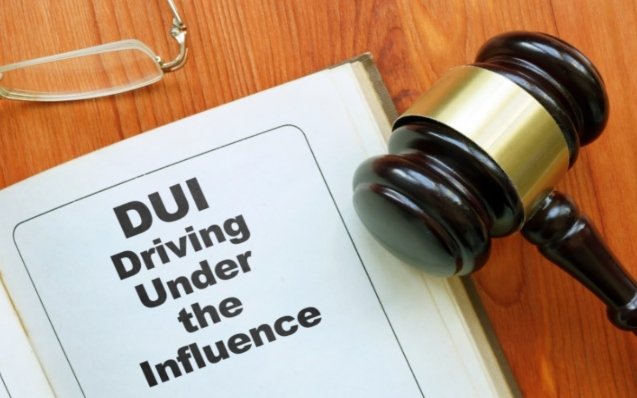The Consequences of DUI Laws and Their Impact on Society

Driving Under the Influence (DUI) laws are pivotal in maintaining public road safety and order. The intensity and specifics of these laws can fluctuate widely from one region to another. Understanding this legal framework is essential to deter impaired driving and safeguard communities in Nebraska.
The Nebraska DUI penalty chart provides a detailed breakdown of the penalties for first and subsequent offenses, highlighting the structured nature of such legal systems. DUI offenses have long been a significant concern, prompting lawmakers worldwide to adopt stringent measures.
The importance of these laws is highlighted by data from the National Institute on Drug Abuse, which show the extensive and persistent effects of impaired driving occurrences. These figures paint a clear picture: DUI laws are a fundamental component in the fight against road accidents, saving lives and resources.
Understanding DUI Penalties
The penalties for DUI offenses are designed to reflect the severity of the crime and act as a deterrent to potential violators. These penalties can vary greatly, encompassing fines, mandatory alcohol education programs, and incarceration. For example, a novice lawbreaker in Nebraska could encounter fines, potential incarceration, and mandated installation of an ignition interlock device, depending on their blood alcohol concentration (BAC) during the arrest.
By adopting such varied penalties, law enforcement agencies aim to address each offense’s unique circumstances. Significantly, more severe punishments are frequently enforced on repeat offenders or individuals involved in accidents that lead to injury or fatality, highlighting the legal system’s dedication to deterring recurrent occurrences of impaired driving. This consistency in enforcement aims to instill a deeper understanding and respect for traffic laws among the driving public.
The Broader Impact on Communities
DUI incidents resonate far beyond the individual, leaving lasting scars on families, communities, and even broader societies. The immediate aftermath of an accident often entails emotional and physical distress for victims and their families.
However, the financial implications can also be significant, as legal fees and increased insurance rates add to the burden everyone involved faces. DUI-related incidents contribute significantly to economic burdens through medical costs, property damage, and productivity losses. These financial strains highlight the importance of comprehensive prevention programs and the role of communities in addressing DUI through education and advocacy.
Preventive Measures and Public Awareness
Public awareness campaigns serve as a formidable line of defense against DUI incidents. High-profile initiatives like “Friends Don’t Let Friends Drive Drunk” have effectively communicated the devastating impacts of impaired driving. These campaigns rely on the persuasive power of media and community leaders to change social norms and reduce tolerance for DUI behavior.
In addition to media campaigns, grassroots efforts foster a culture of responsibility and awareness. Local organizations often spearhead educational workshops and seminars, targeting at-risk populations such as young drivers. By creating an environment where the consequences of DUI are well-known, communities can work towards a significant reduction in these dangerous behaviors. Local success stories highlight the powerful impact of well-organized prevention efforts, setting benchmarks for other communities to emulate.
The Role of Technology in DUI Prevention
Devices like ignition interlock systems prevent drivers from starting their vehicles if their breath test exceeds a pre-set alcohol level. These systems are mandatory for certain offenders in several jurisdictions, providing a continuous check against the temptation to drive under the influence.
Moreover, mobile applications now offer users real-time monitoring and feedback, helping drivers track their estimated BAC levels and avoid decisions that could lead to DUI charges. These technological solutions reflect an innovative approach to DUI prevention, addressing the issue before it becomes a legal problem. As these tools become more integrated into daily life, they hold the promise of making a substantial impact on reducing DUI incidents.
Legal Consequences Beyond Penalties
While the immediate penalties for DUI are substantial, the long-term legal consequences can be just as daunting. Individuals convicted of DUI may face enduring repercussions, such as elevated insurance premiums, restricted employment opportunities, and difficulties in international travel due to a criminal record.
These outcomes highlight the pervasive impact of a DUI conviction, influencing various aspects of personal and professional life. Managing these consequences requires proactive measures, including legal consultation and participation in education and rehabilitation programs.
By taking these steps, offenders can mitigate the long-term effects of a DUI conviction and reintegrate successfully into society. Awareness of these extended legal challenges further underscores the importance of preventing DUI incidents before they occur.
Read Also: How GSE Repair Ensures the Longevity of Ground Support Equipment?
Rehabilitation and Support for Offenders
Rehabilitation and support programs are pivotal in aiding DUI offenders on their journey to recovery and reintegration. These efforts, whether ordered by courts or pursued voluntarily, offer essential direction and assistance for individuals ready to confront the underlying reasons for their actions. Successful programs often include counseling sessions, educational workshops, and peer support networks. Facilities like Carrara luxury rehab center in Malibu exemplify how comprehensive, personalized treatment in a serene environment can significantly enhance recovery outcomes for individuals seeking to overcome substance use issues following DUI incidents.
Organizations providing these programs seek to reduce recidivism and prepare individuals with the skills and confidence needed to make responsible choices. By fostering a supportive environment, these programs play a critical role in reducing DUI’s societal impact, encouraging offenders to contribute positively to their communities after rehabilitation.
Looking Ahead: Future Trends in DUI Legislation
DUI legislation continues to evolve, driven by technological advances and changing societal attitudes toward impaired driving. Policymakers are increasingly exploring data-driven approaches to enforcement and prevention, seeking to enhance the efficacy of existing laws while incorporating new preventative technologies.
Future trends may include expanded use of telematics for real-time monitoring, more comprehensive rehabilitation programs, and enhanced public education initiatives that promote safe driving habits. By engaging communities in discussions about these developments, stakeholders can work collaboratively to ensure future legislation effectively addresses the challenges posed by DUI incidents, ultimately contributing to safer and more responsible driving environments.
